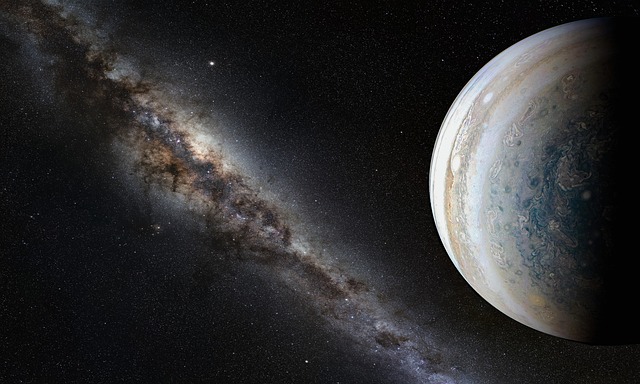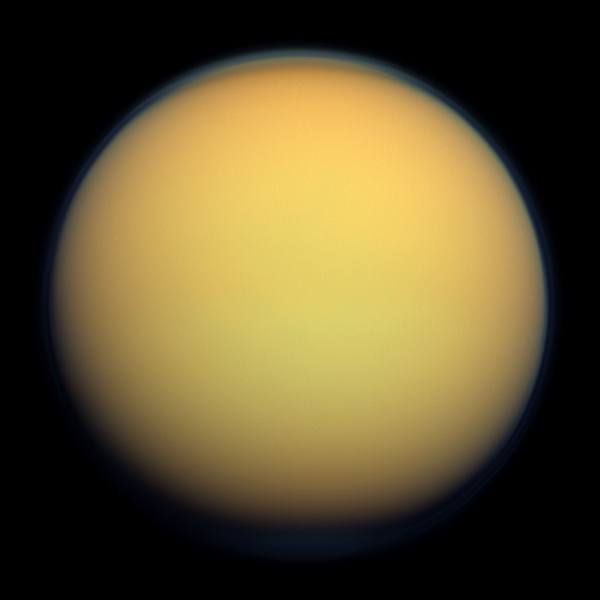*This post may contain affiliate links. This means we may make a commission if you purchase an item using one of our links*
The main differences between Jupiter and Titan are that Jupiter is the largest planet in our solar system with a gas based composition consisting mostly of hydrogen helium whilst Titan is the 2nd biggest Moon in our solar system and is the most Earth like entity in our solar system, with rivers, lakes, terrestrial body and even a water cycle that is similar to that of Earth.
Continue reading if you want a more in-depth look at each of these celestial objects along with some of their similarities and other differences.
What Is The Planet Jupiter?
Table of Contents

Jupiter is the 5th farthest planet from the Sun and the largest planet within our local solar system. The planets most recognizable trait is the giant red spot visible on its atmosphere along with the brown horizontal bands flowing across its atmosphere.
As a result of its composition and size, Jupiter falls under the classification of a gas giant.
This is because its composition mostly consists of the elements hydrogen and helium. The split is roughly 71% hydrogen, 27% helium, with the remainder of the elements split throughout the left over 2%.
As the biggest planet in our solar system, Jupiter is 139,820 km or 1,300 Earths in diameter, it has a mass of around 0.001 solar masses, the temperature when inside the clouds are roughly -145 degrees Celsius whilst the core is far hotter, equating in the region of 24,000 degrees Celsius.
Due to its extreme circumstances, gaseous composition and distance from the Sun, the planet is not theoretically capable to support life, from its subzero temperature to the extremely fast 640 km/h winds, and its gravity which may be unsustainable for our bones, roughly 2.4 times greater than Earth’s.
Although the conditions on Jupiter aren’t suitable for us, some of its 79 moons like Europa for example could support life.
This brown giant has a relatively fast rotation around its axis where 1 rotation typically takes 10 hours to make whilst its orbit around the Sun is far longer taking in the region of 12 years for 1 full cycle.
Another feature of Jupiter that is renowned by astronomers is the strength of its magnetic field. In comparison to the other planets in our solar system it is even stronger than our Sun, where it’s over magnetosphere is roughly 20,000 times the strength of Earth.
What this means is that Jupiter’s magnetosphere is able to avert solar winds that are 3 million kilometers away from it.
What Is The Moon Titan?

Titan is Saturn’s largest moon and the second biggest moon in the entire solar system, with a diameter of 5,150km. This would make it even larger than the planet Mercury which is only 4,879km, and significantly larger than Pluto also.
As a result, Titan’s gravitational strength stands at around 1.352 m/s²
It is the only natural satellite in our solar system that is composed similarly to Earth, where it has a thick atmosphere made primarily of nitrogen (95%) along with smaller amounts of methane (5%). It has rivers and lakes on its surface along with a water cycle very similar to that of Earth, where essentially water evaporates and eventually lands on the satellites surface.
Therefore, much like Earth, Titan has a terrestrial based body but, there is a difference in their atmospheric pressure. The pressure on Titan’s surface is around 60% greater than that of Earth’s surface but, it isn’t nearly as dense.
Nevertheless, it is still far denser than most other bodies at 1.88 g/cm³. As a result, Titan’s mass is 1.345×10^23 kg.
In regards to its temperature, Titan is on the colder side where it averages around -179 degrees Celsius whilst its core’s temperature is actually very cold in comparison to other entities falling between 226 – 526 degrees Celsius.
As Saturn is the 6th farthest planet from the Sun, it will take Titan roughly the same amount of time to orbit the Sun, which would fall around 29.4 years.
It takes Titan 15 days and 22 hours to orbit Saturn. A day is 15 days and 22 hours also as it is tidally locked to the gas giant.
Similarities Between Jupiter And Titan
There are a few similarities that Jupiter and Titan share, which in this case includes the following:
- Both are a spherical shape.
- Both have a hotter core.
- Both are part of the same solar system.
- Neither have tectonic plates.
- Both orbit another object.
Differences Between Jupiter And Titan
In regards to the differences between the two, they include the following:
- Jupiter is far bigger than Titan with a diameter of 139,820km compared to Titan’s 5,150km. This also makes Jupiter the biggest planet in our solar system and Titan the 2nd biggest natural satellite.
- Jupiter is gas giant comprised mostly of hydrogen and helium whilst Titan is a mixture of a rocky terrestrial exterior and atmosphere.
- Titan has an average temperature of -179 degrees Celsius whilst Jupiter averages -145 degrees Celsius.
- In regards to their core temperature Jupiter’s is 24,000 degrees Celsius whilst Titan has a relatively cool core that sits around 226 – 526 degrees Celsius.
- Jupiter has 4 rings whilst Titan has 0.
- Jupiter has 79 other moon orbiting it whilst Titan has 0.
- Jupiter has an axial tilt of 3.13 degrees whilst Titan’s axial tilt is 27 degrees.
- Titan has very light wind on its surface hitting around 0.3m/s which is equal to around 1.08 km/h whereas Jupiter’s wind speeds are much stronger achieving speeds of upto 1,448 km/h
- Jupiter has a far stronger gravitational strength of 24.79 m/s² compared to Titan’s that is far weaker at 1.352 m/s².
- Jupiter has the strongest magnetic field at 4.3 gauss in the entire solar system, which is much more than Titan’s.
- It takes Titan 15 days and 22 hours to complete an orbit around Saturn whilst Jupiter orbits the Sun in 12 years.
- A day on Jupiter is 10 hours whilst a day on Titan is 15 days and 22 hours.
- Jupiter orbits the Sun is a circular pattern whilst Titan orbit Saturn elliptically.
- Titan is tidally locked to Saturn whilst Jupiter is not tidally locked to any of its moons.
Summary
Although both are part of the same solar system, Titan and Jupiter operate very distinctly from one another.
Whether their differences in temperature, size, mass, the number of bodies that orbit them and their overall composition, Jupiter is very different from Titan functionally as it is the largest gas giant and Titan the second largest moon.

